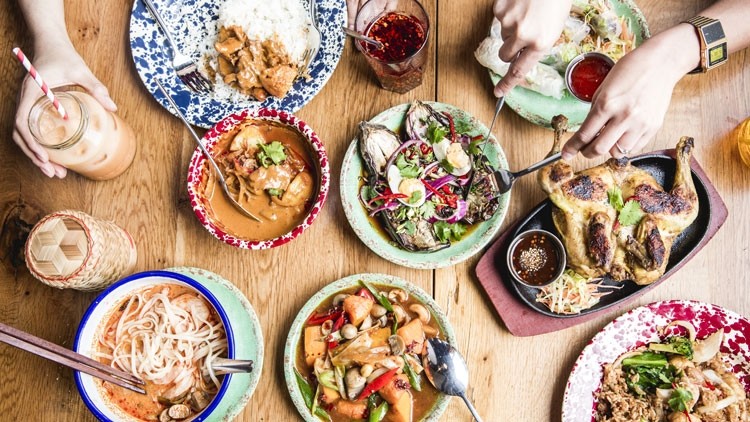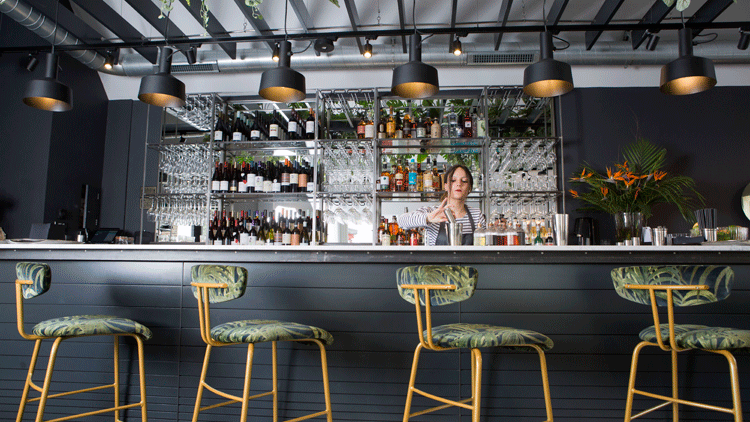SPONSORED BY NISBETS IN PLACE
How to avoid making a fashion faux pas in the dining room

There can’t be many Michelin-starred restaurants that expect diners to help themselves to paper napkins from stainless steel dispensers on the table. But that’s exactly what happens at Paco Tapas in Bristol, where chef-owner Peter Sanchez-Iglesias delights in ripping up the rulebook on fine dining aesthetics.
“We used to get a lot of shit about the dispensers,” says the chef gleefully. “People complaining they were in a Michelin restaurant and not been given a napkin, but you won’t believe the amount of times I wipe my hands when I’m eating tapas. We don’t want people sitting there with dirty linen napkins on their laps or having to change them every two seconds.”
If fixtures and furniture are the major headlines of a restaurant’s identity, then it’s the small print of tableware, glassware and uniforms that give diners a more intimate feel for a place. For Sanchez-Iglesias, paper napkins are not just practical, they also help feed into a narrative of simplicity and authenticity. “The dispensers are exactly what it’s like in Spain,” he says. “They really remind me of tapas restaurants when I was growing up.”
In keeping with this spirit, most of the food, which is cooked over a wood fire, is served on oak boards topped with the same recycled brown paper used for the menus.
“It’s like a blank canvas,” explains the chef. “The whole point of Paco Tapas is the amazing ingredients we use like the Iberico presa cut. I don’t want to add carbs or a sauce or frilly herbs on the top. I just want the product to do the talking. When we place it on the board it looks incredible. It’s elevated, but in a non-pretentious way.”
Side plates and dishes have a handmade look and feel. “None of them are identical, there are always slight variations,” he says. “They shine personality.”
London-based restaurant group Corbin & King is renowned for its attention to detail. Rather than being led by trends, it is led by the buildings its restaurants inhabit, which are typically grand and steeped in history. The interior at its latest restaurant Soutine in St John’s Wood takes a lot of visual cues from the Edwardian architecture and the design is heavily influenced by the arts and crafts movement of the early 20th century.
The directors were heavily involved in choosing all aspects of the tableware and glassware, from the silverware to the weight of the wine glasses. The aim was for the style of the crockery to give a sense of the feel of the restaurant. The interiors and styling at Soutine are inspired by the early 20th century, so the tableware reflects this. The company has intentionally used a few different types and styles to make the restaurant feel like it has evolved over time, and give off a reassuring ‘lived-in’ feel.
Like Sanchez-Iglesias, Brighton’s Gingerman Restaurants Group co-owner Ben McKellar has also gone with a relatively casual aesthetic at his latest restaurant The Flint House. Part of a new development in The Lanes, the restaurant serves small plates from an open kitchen to a 16-cover dining counter.
Making sure the plates worked together on the counter in terms of colour, style and dimensions was a key consideration for Brighton-based potter Tom Butcher, who was working to a specific brief. The hand-thrown dishes come in a variety of different dimensions with dappled oatmeal and blue glazes.
“We started working on the designs once the interior had been decided,” explains McKellar. “It’s like buying a sofa and then deciding on the scatter cushions. We wanted a bit of colour, but not too bright and with a rustic, Nordic feel. And we spent a lot of time working out proportions – the space between stools, the depth of the counter and how the plates will fit into that space.”
Creating bespoke tableware comes at a cost – McKellar reckons he spent around 25% more than buying off-the-shelf crockery.
“It’s not a huge cost in the grand scheme of things,” he says. “Too often restaurants blow their budget on back-of-house things, like the electrics or the plumbing, but it’s the stuff that people see and touch every day that really matters.”
At London burger restaurant Cut + Grind, owner Paschalis Loucaides echoes this point. “The quality investment we make as a business should be in anything the customer can touch or smell or feel,” he says.
Eschewing the plastic trays and baskets used by many burger joints, Cut + Grind serves food on Revol Equinoxe plates (which cost around £10 each) and has invested in weighty Pint Inox cutlery. Knives and forks are polished and placed with a napkin in hygienic pouches made from recycled paper – a practical design feature Loucaides came across in Italy.
“It’s very clean and tidy, and makes turning tables around quick,” he says. “Lots of companies use pots on tables and customers helps themselves. But we’re trying to be a little bit more premium and show that we care about what diners touch and how clean it is.”
London-centric Thai chain Rosa’s Thai Café started out using blue and white enamel picnic-style plates but invested in an off-the-shelf range of coloured enamelled replacements four years ago. The hard-wearing dishes are marbled with bright primary colours, which echo Rosa’s branding.
“We trialled lots of different plates with strong solid colours and plain ones, but they didn’t bring out the colours and personality of the food like these,” says Punky Patra-Yanan, head of brand and marketing. “They also look great on Instagram, which needs bright colours and textures.”
When it comes to glassware, practicality is a key consideration for Rosa’s, which is keen to exploit space in its 13 city-centre sites. It limits glassware to just one type of wine glass and a tumbler, while iced tea and cocktails are served in recycled glass jars left over from the pickled garlic used to make the sauce for the restaurant’s pad Thai.
“We try to keep it simple because of space limitations,” says Patra-Yanan. “Our restaurants tend to be quite small and storage can be limited, especially around drinks stations and the bar. You have to be as smart as possible to maximise cover space.”
At The Flint House, McKellar also sought to limit the number of different types of glasses. “Though drinks are a big focus for us at the new place, we didn’t want loads of different options and so chose about five different ones which could be mixed and matched,” he says. “The three main considerations, in no particular order, are cost, durability and style. They have to be fit for purpose. Zalto glasses are a favourite of mine but they are too expensive and fragile to be used in a busy and not high-end restaurant.”
Uniforms are also an important part of the overall aesthetic for front of house. At Cut + Grind the front-of-house team sport smart but simple branded black T-shirts, while chefs wear denim and leather aprons when grinding meat cuts in public. These pick up on the restaurant’s ‘modern butcher’ philosophy but are also practical with leather straps that can be detached so the denim can be easily laundered.
At Sam Hart’s London-based Barrafina, group waiting staff wear white polo shirts with red logos and burgundy short aprons but everything else is of the member of staff’s own choosing, an approach that’s increasingly common in all but the most upscale restaurant dining rooms. For chefs it’s white chef jackets, with the Barrafina logo embroidered in red.
“We wanted to keep the uniforms simple so that the focus is on the food and experience,” says Hart. “Our overall approach is one of informality and relaxed quality. Primarily the uniform had to be functional. Anything impractical where style is prioritised over substance doesn’t work for me.”
At Simon Rogan’s London restaurant Roganic the staff wear linen shirts with a mandarin collar, which are described as “very simple and chic” by operations manager Sam Ward. The uniforms pop in the modern and minimalistic restaurant. “Roganic hasn’t been built around a trend, it’s a small simple space that we have decorated in rusted artwork which runs through all of our restaurants in one way or another,” says Ward. “Around this we showcase pickled ingredients from our farm in Cartmel.”
From paper napkins and Instagram-friendly plates, to cutlery that complements a specific type of restaurant interior, it’s the tangible assets of a restaurant that can make all the difference.






























